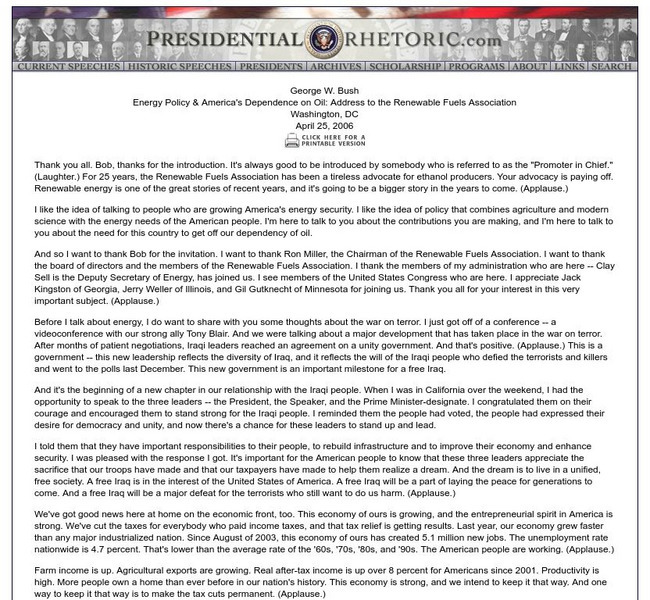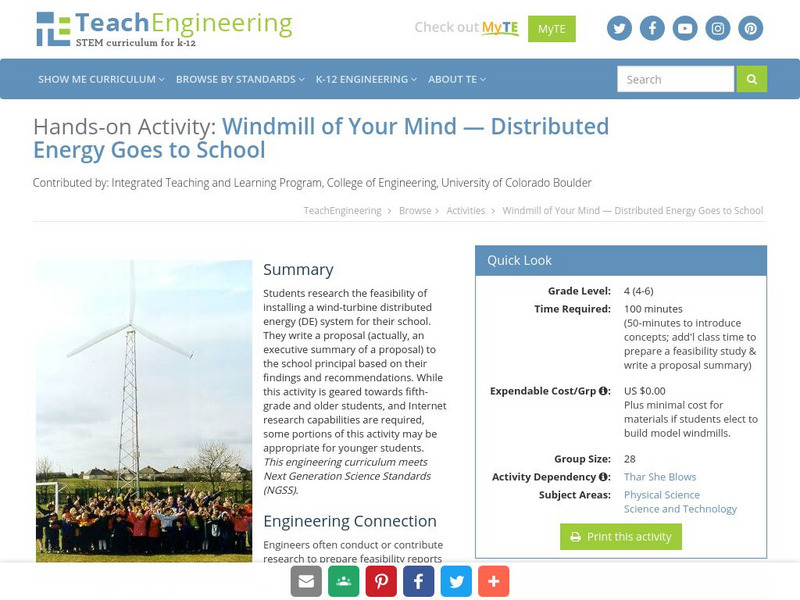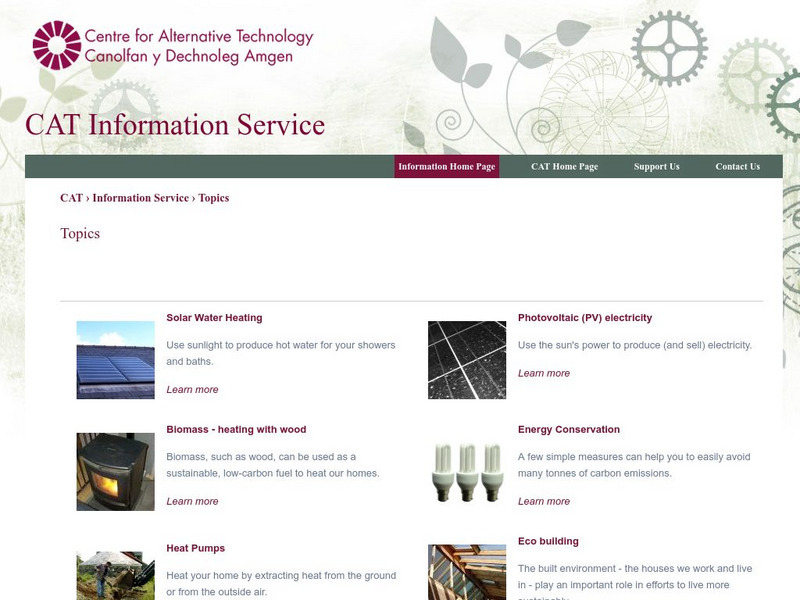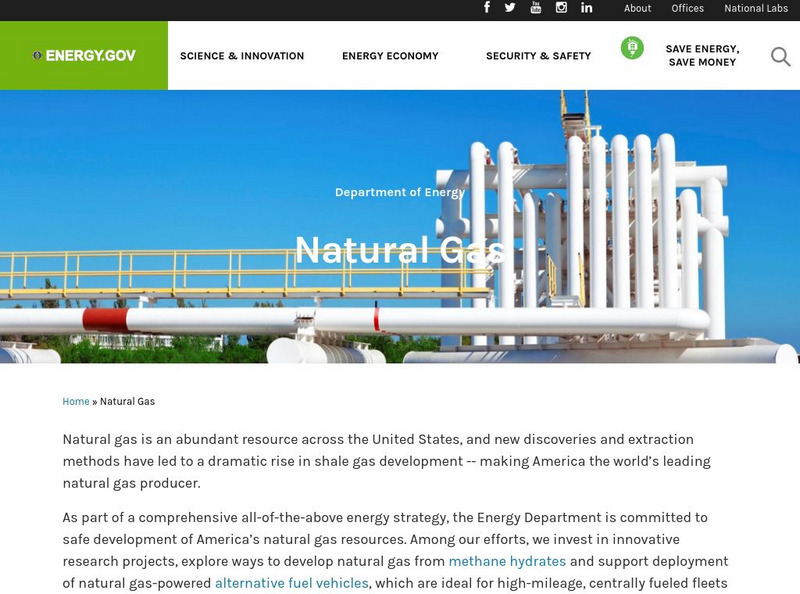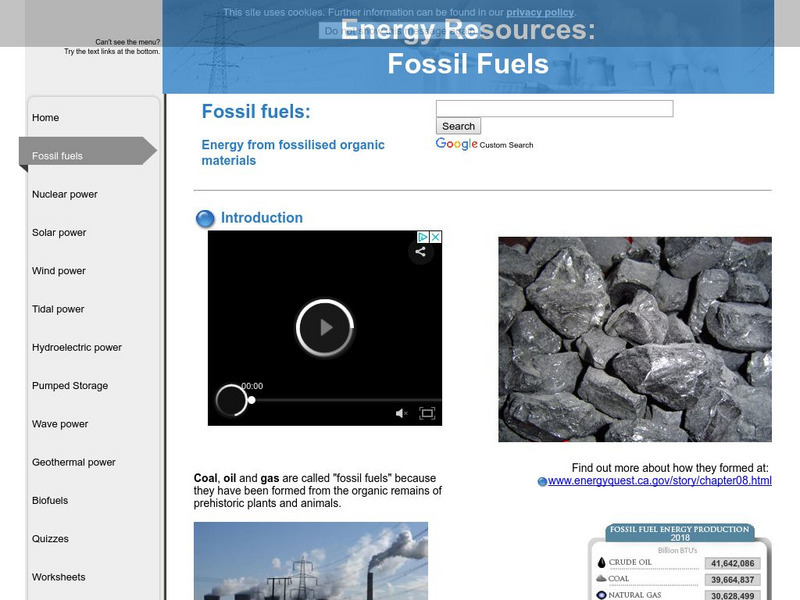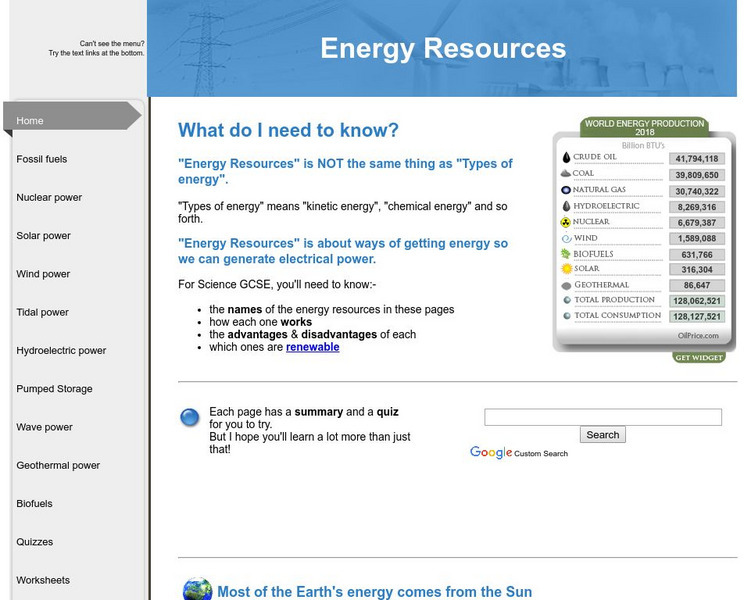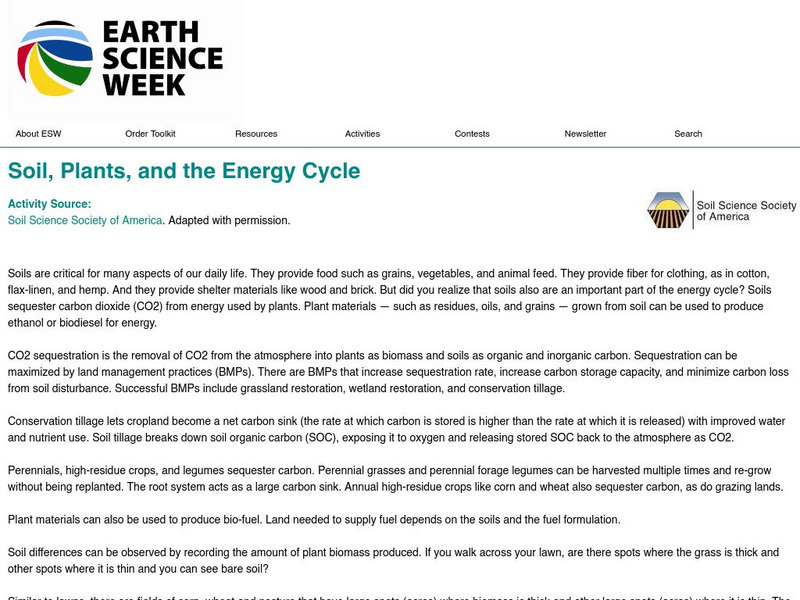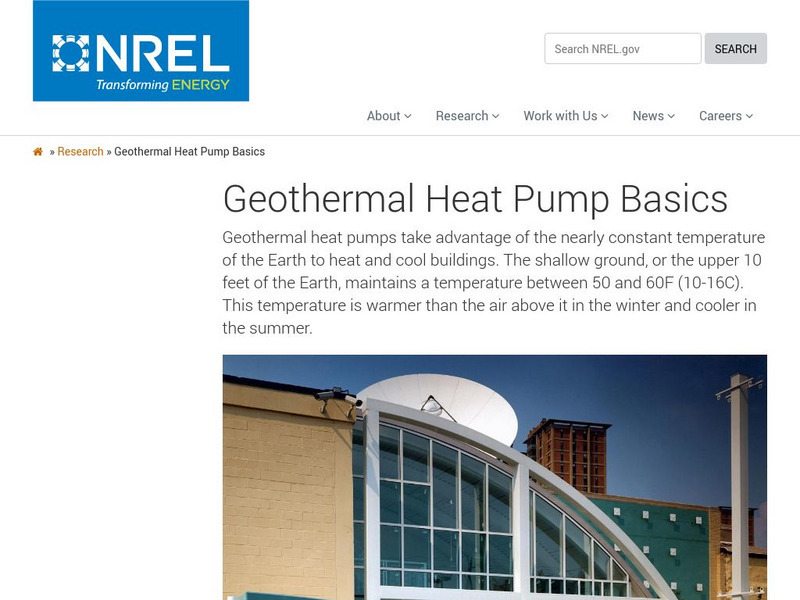National Academies of Sciences, Engineering, and Medicine
The National Academies: Our Energy Sources
The many sources of energy production in the United States are described in this overview. Included are traditional sources, renewable sources, and new energy production technologies.
National Academies of Sciences, Engineering, and Medicine
The National Academies: What You Need to Know About Energy
This very comprehensive site aims to provide the latest, most accurate information available about energy, its consumption, sources of energy, alternative energy, impact on the environment, and conservation. One section focuses on the...
Other
Presidential Rhetoric: George W. Bush: Energy Policy
President George W. Bush discusses his energy policy, American's dependence on oil and alternative fuel in this April, 2006, speech.
PBS
Pbs News Hour Extra: Choosing an Automobile, Understanding Alternative Fuels
This lesson plan encourages students to look at alternative methods of fuel and explore the various impacts each has on the environment.
Other
Bsi Education: Alternative Energy
The Applied Science resource consists of practical activities that demonstrate the importance of standard procedures in scientific work. Students examine alternative energy through a variety of activities. Some topics investigated are...
TeachEngineering
Teach Engineering: Windmill of Your Mind: Distributed Energy Goes to School
Students research the feasibility of installing a wind-turbine distributed energy (DE) system for their school. They write a proposal (actually, the executive summary of a proposal) to the school principal based on their findings and...
TeachEngineering
Teach Engineering: Energy Conservation
Students are introduced to the idea that energy use impacts the environment and our wallets. They discuss different types of renewable and nonrenewable energy sources, as well as the impacts of energy consumption. Through a series of...
Science Buddies
Science Buddies: Solar Speedway
Solar power is hot these days. Gleaming, black solar panels soak up rays on more and more rooftops of homes and businesses providing a clean, alternative source of heat and electricity. You might guess that different times of the day...
Other
Student Energy: Alternative Energy
Provides the definition of alternative energy and how it differs from the definition of renewable energy. Includes a list of links to some excellent resources.
National Geographic
National Geographic: Energy Solutions: Tapping Into Topography of Lake Turkana
In this lesson, students read and analyze articles about the alkaline water in Lake Turkana in Kenya, and about a wind energy project near Lake Turkana. They then examine the many factors that must be considered when undertaking this...
Other
Centre for Alternative Technology: Information Service
Information and advice on sustainable living. Provides data for people that might want to use technology in the construction or conversion of their home into an environmentally sustainable structure.
Other
Rew: Us Energy Department Funds Low Carbon Jet Fuel Demonstration Plant
An approval from the U.S. Energy Department will financially allow further development and testing of low-carbon fuel.
US Department of Energy
Department of Energy: Natural Gas
Natural gas is an abundant resource across the United States, and new discoveries and extraction methods have led to a dramatic rise in shale gas development -- making America the world's leading natural gas producer. We invest in...
Science4Fun
Science4 Fun: Biomass Energy
What is biomass? Learn about the different types of biomass energy, how it is released, and the advantages and disadvantages of biomass.
Other
Energy Resources: Fossil Fuels
Alternative forms of energy site showcases fossil fuels. Discover how it works, its' advantages and disadvantages as well as whether or not it's a renewable resource.
Other
Energy Resources
Finding alternative energy sources is a challenge facing the leaders of today and tomorrow. Andy Darvill has created an impressive resource, summarizing various renewable and non-renewable energy resources.
American Geosciences Institute
American Geosciences Institute: Earth Science Week: Soil, Plants, and the Energy Cycle
Students explore what kind and how much bio-mass can be produced in an area around your city or town. They figure how many gallons of fuel can be expected from one acre of crop land, and how much carbon can be sequestered in the local area.
Discovery Education
Discovery Education: Grade 3 5 Module: Designed for Efficiency [Pdf]
For this 3-5 teaching module, young scholars conduct experiments, explore with online interactives, and watch videos that help them understand how vehicles work. Then, students demonstrate their understanding by designing energy...
TED Talks
Ted: Ted Ed: How Do Solar Panels Work?
The Earth intercepts a lot of solar power: 173,000 terawatts. That's 10,000 times more power than the planet's population uses. So is it possible that one day the world could be completely reliant on solar energy? Richard Komp examines...
FT Exploring
Ft Exploring: Wind Turbines and the Energy in Wind
Discover the science concepts behind wind turbines and wind energy.
Other
National Renewable Energy Laboratory: Geothermal Heat Pump Basics
Basic information about how these heat pumps function and where they can be used.
Science Buddies
Science Buddies: Build Your Own Windmill Generator
Build your own windmill and see how the wind can be converted into energy to produce electricity. This science fair project should help you understand the use of wind as a source of alternative energy. The Science Buddies project ideas...
TeachEngineering
Teach Engineering: A Case of Innovation
A white paper is a focused analysis often used to describe how a technology solves a problem. In this literacy activity, students write a simplified version of a white paper on an alternative electrical power generation technology. In...
Other
Fuel Our Future Now: Grade 9 12 Module: Vehicle Design Virtual Lab [Pdf]
Students act as a community of STEM research professionals, working together to solve energy efficiency problems in today's vehicles. Students then design and test vehicles that are suitable for different consumer needs based on...


